Montfaucon — the horror of medieval Paris
It is not difficult to guess that the death penalty by hanging has always been the most popular method of execution. Fast, reliable, and most importantly affordable — you can hang a person on any sufficiently high object or structure that can withstand the weight of the body.
But in In the Middle Ages, when they hung a lot and with taste for the slightest fault, something more durable, roomy and visual than a tree branch or a beam with a support was needed. This is how the Montfaucon of Paris appeared — the largest and most terrible gallows in the history of mankind.
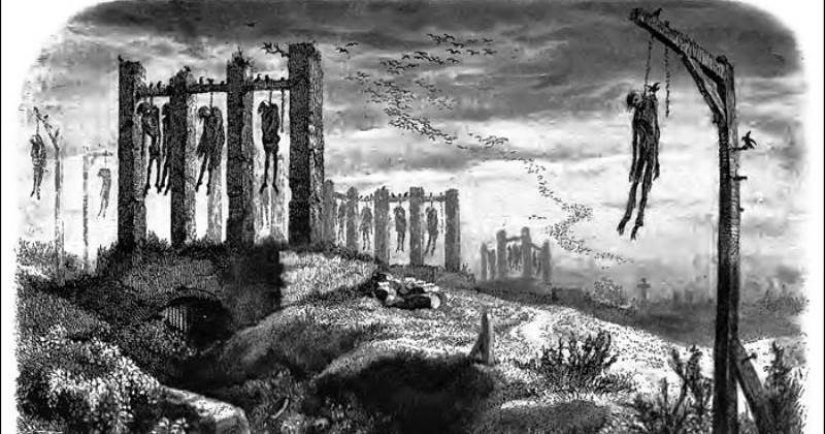
The full name of this infernal invention is Gibet de Montfaucon. The gallows had its own name, consisting of a word indicating the location (mount — mountain) and the owner of the land (Count Faucon), who generously provided a place for a very necessary construction for the kingdom.
However, many translate the name as Falcon Mountain, which is not a mistake, since faucon in French is a falcon.
No one knows the exact date when the creepy colonnade appeared in the northwest of Paris. It is only known that Montfaucon was built in the XIII century on the instructions of King Philip IV Handsome, who was popularly called Iron behind his eyes. The king was of a cool disposition and hung enemies, guilty subordinates, criminals and just vagabonds right and left.
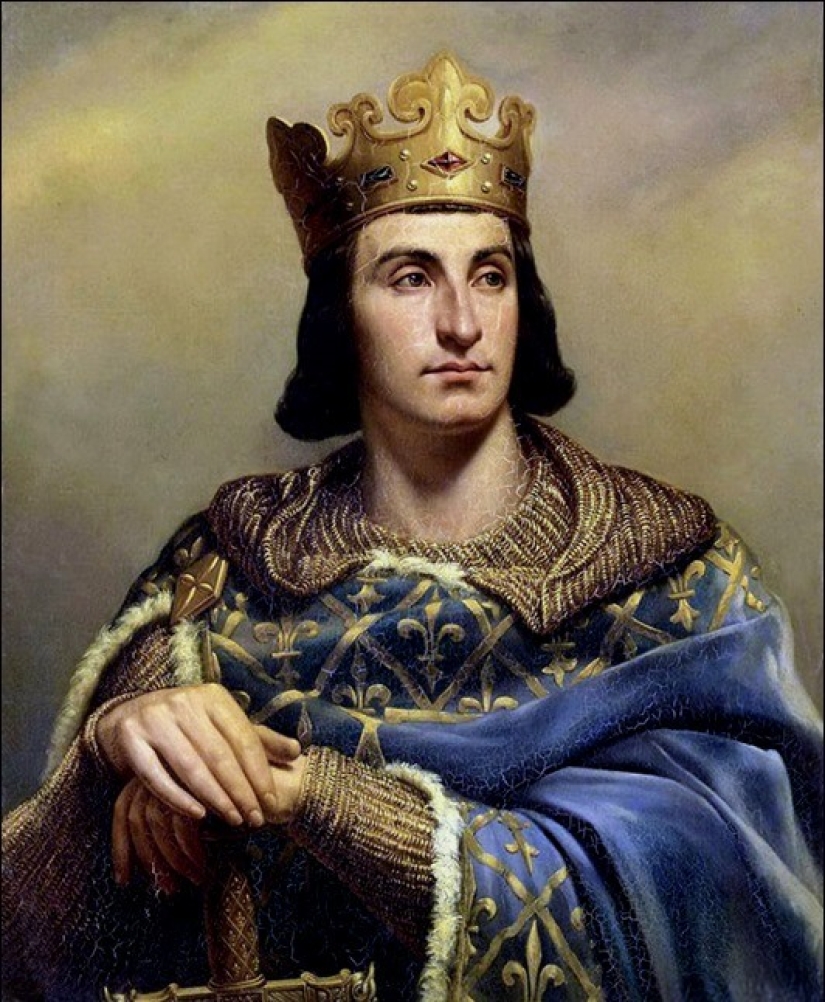
The main place of execution of commoners at that time was the Greve Square, located at the berths of the river port of the Seine. The area did not always cope with the load, and since in The Middle Ages preferred not to remove the gallows immediately, then the smell of rotting bodies spread through residential and commercial quarters. Montfaucon was called upon to "unload" Greve Square and at the same time relieve the city authorities of the need to get rid of corpses, which, according to the law of that time, could not be given to relatives or buried in a Christian way.
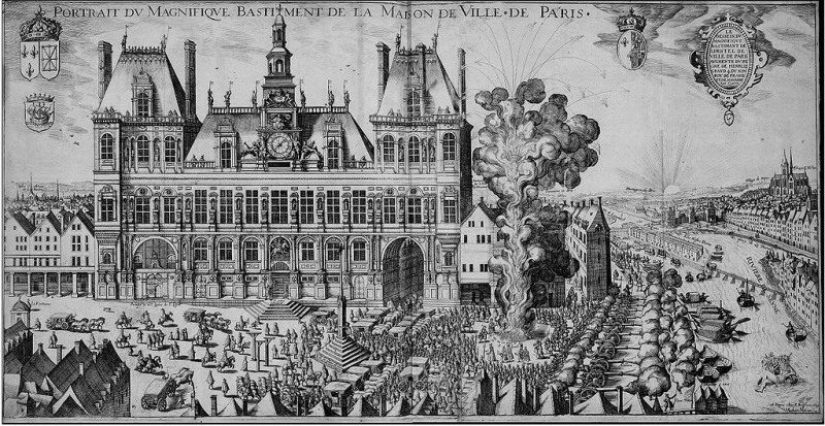
This is how the Gibet de Montfaucon "death combine" appeared, the designer and curator of the construction of which was the adviser to the king Enguerrand de Marigny. Here we need to digress and mention that Monsieur de Marigny, a few years after the completion of the work, became a "client" of this huge gallows, which amused Parisians a lot.
The gallows was a structure of a shape close to a cube, with a height of 12 m and sides of 14 m. On a high stone foundation, 16 massive pillars of poorly hewn stone were located on three sides in the form of a colonnade, which were covered in three tiers with stone beams.
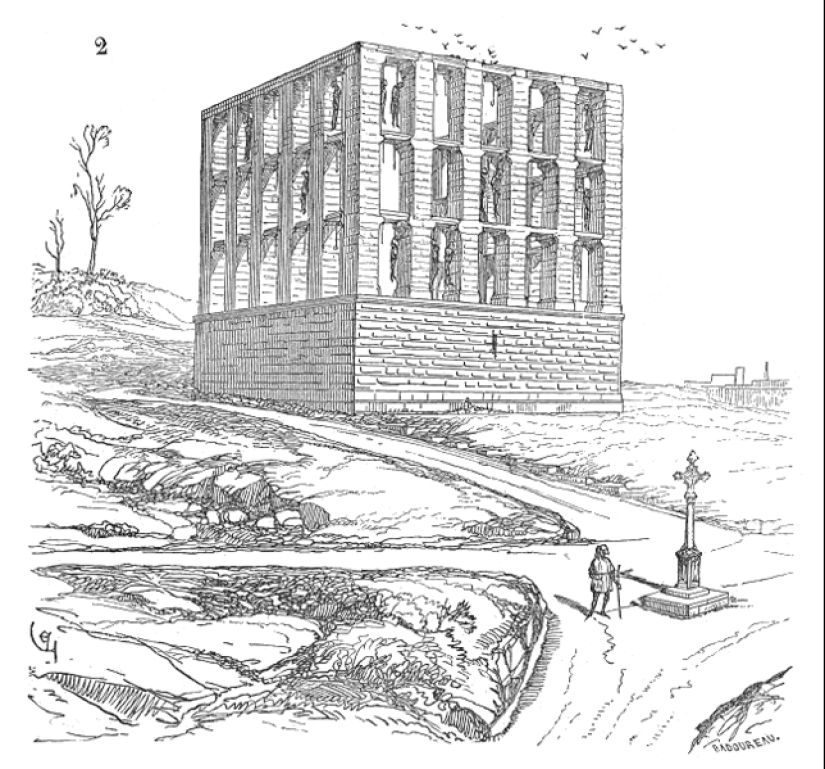
Thus, Montfaucon resembled a three-story building without ceilings and window sashes, instead of which executed people hung on chains in the openings. The resemblance to the building was enhanced by a door in the basement of the structure, behind which there was a stairwell for servicing tiers with hangmen. The entrance and staircase occupied the fourth, column-less side of the gallows.
At the base of the Montfaucon there was a so—called ossuary - a well designed for the disposal of bodies. After hanging on the chains for the prescribed time, the body was removed by the executioner's assistants and dumped into the ossuary. Thus the problem of burial was solved. From time to time, when the well was filled with remains, it was cleaned. There was only one key to the massive doors of Montfaucon and its keeper was the city executioner.
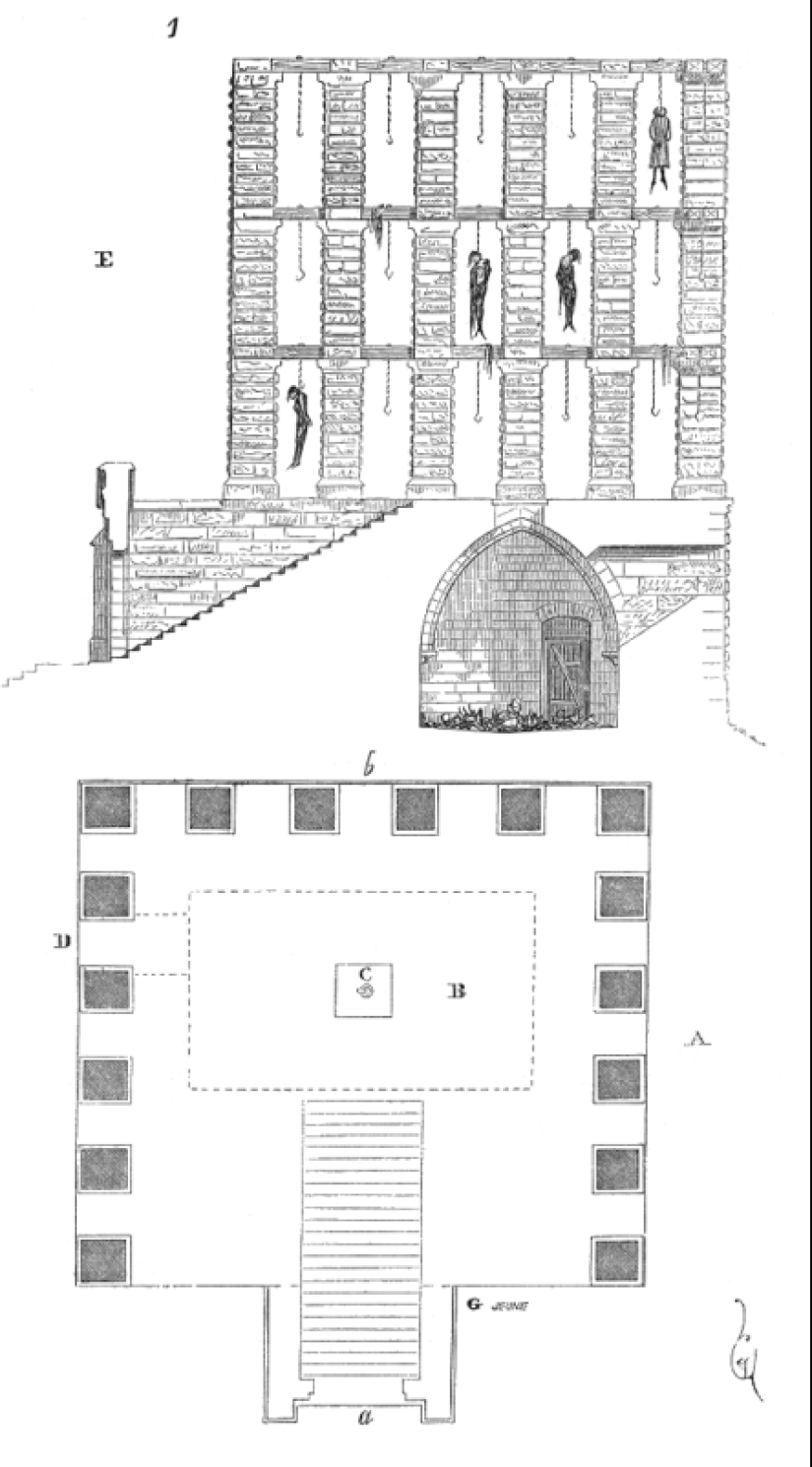
It was this well that Victor Hugo made the place of Quasimodo 's farewell and Esmeralda:
At the same time, Montfaucon could "serve" 50 people, and even 90 if necessary. The problem of free space was solved simply — those sentenced to death were hanged two at a time in a cell. Sometimes, in times of wars and uprisings, this was not enough, so a few years later two ordinary gallows appeared nearby, complementing the main complex.
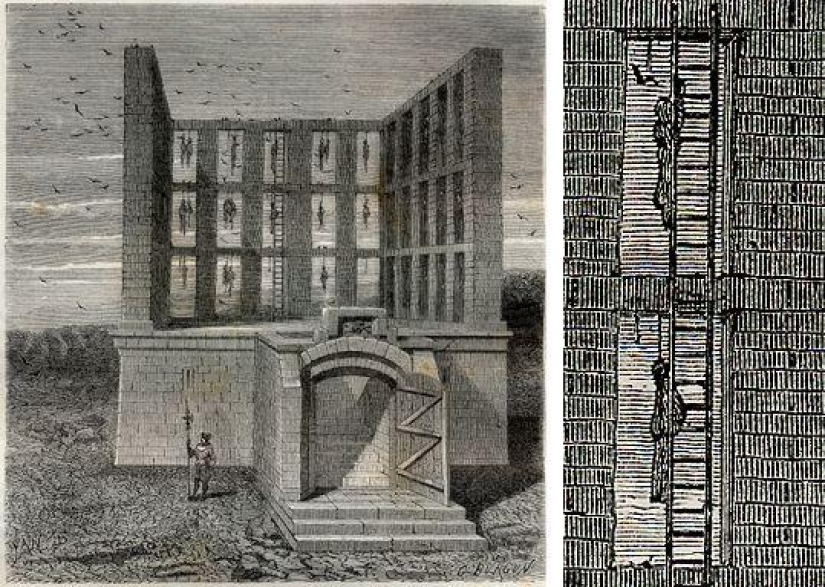
If we consider that Montfaucon was located on a chalk hill, dominating the district and was never empty, it could be considered not only an instrument of execution, but also an excellent propaganda tool, warning Parisians and visitors from compromises with the law. Crows were constantly circling over the gallows, and even the inhabitants of medieval Paris, accustomed to death, were very impressed by it.
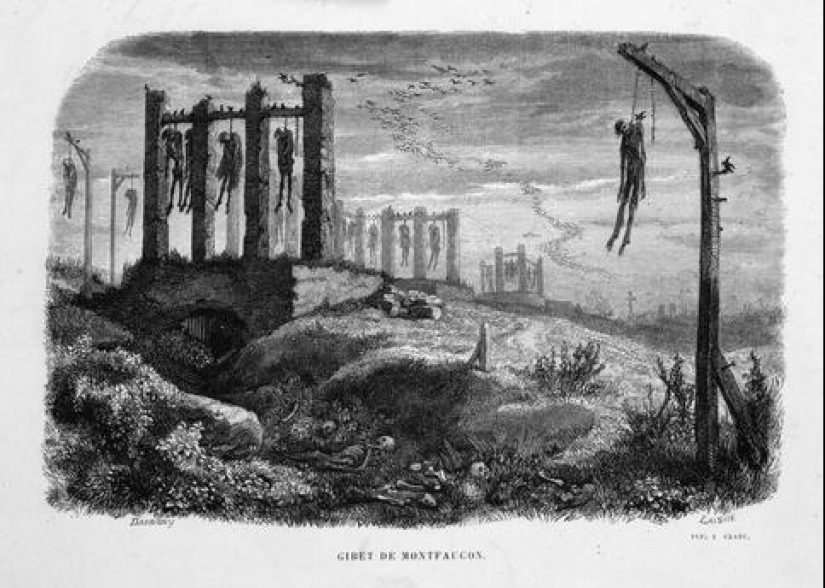
Incredibly, Gibet de Montfaucon has served the kings of France faithfully for almost four centuries. An old engraving depicting the execution of the royal treasurer in 1527 clearly shows that very little remained of the majestic Montfaucon in the XVI century, but it was still actively exploited. The last execution on this gallows, which is practically ruins, took place in 1629. The good old Montfaucon has worn out so much that it has become dangerous not only for rebels, thieves and heretics, but also for the executioners themselves.
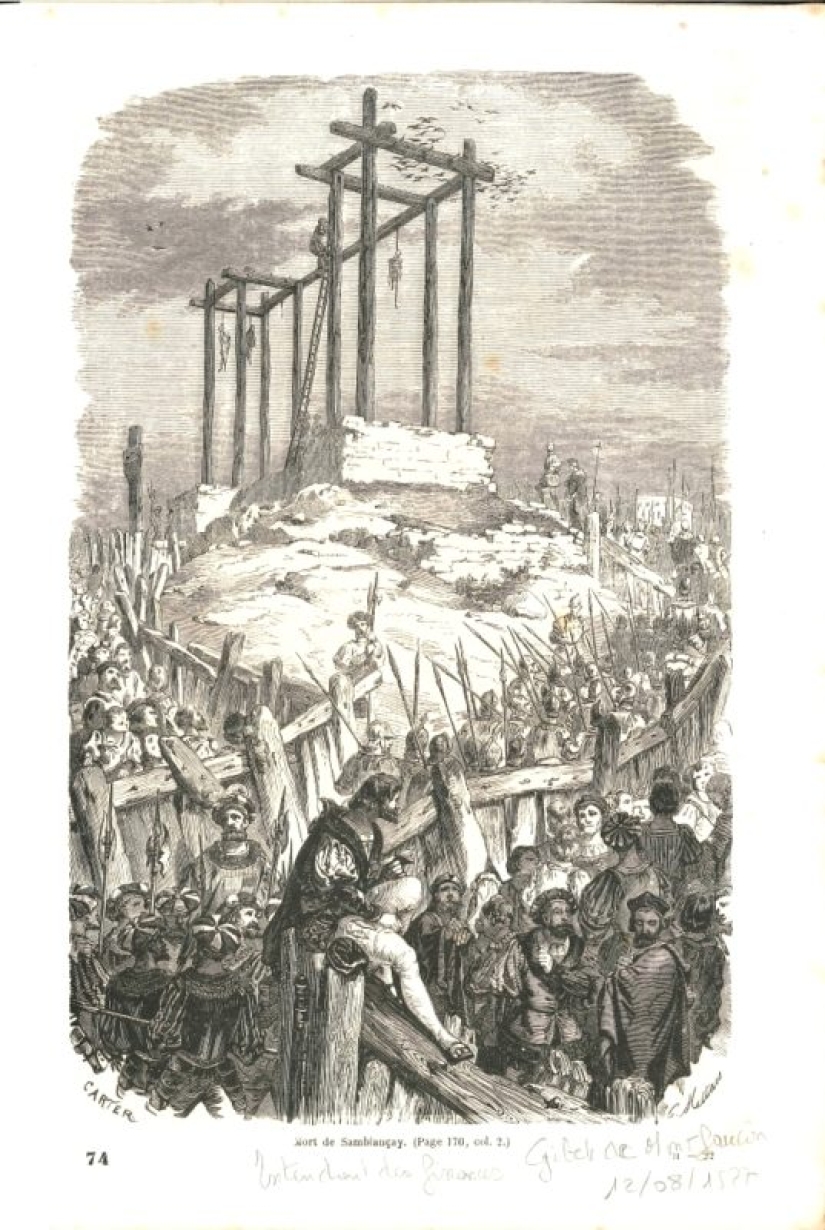
For several decades, not the quietest in the history of France, everyone was not up to the terrible construction on the outskirts of Paris, and then a guillotine appeared, solving the issue in a fraction of a second and not requiring expensive maintenance. Montfaucon, which had fallen into complete decay, soon found itself in the urban development. Most likely, the citizens of the Republic of the Enlightenment era were burdened by the view from the windows of the moss-covered colonnade with fragments of chains, and at the end of the XVIII century the gallows was finally dismantled.
Today, the place where the most terrible gallows in history was located is located in the heart of Paris — this is the Butte-Chamon Park in the district 19.
Recent articles

In Ancient Egypt, gods were revered, pharaohs were glorified, and majestic tombs were built. The builders of royal tombs were ...

Whether you are a tourist or a professional photographer, in both cases Lapland is a truly magical place. There is not only a very ...

Why should a coffin be a boring box if it can be ordered in the form of a lobster, fruit, bird or shoe? Residents of the African ...